Guppy fry: how much do they grow and how to care for them?
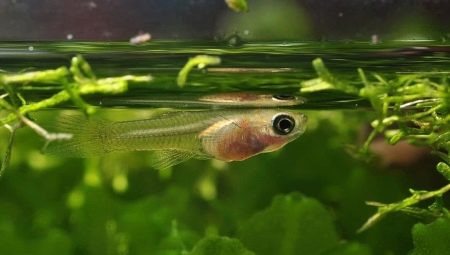
To get strong and healthy guppies at home, you should take care of the young from the very moment of his birth. This species is interesting in that it is viviparous, that is, the females sweep out the formed cubs. Fry are born healthy and active and it is important to maintain their condition until the moment when they can be released into the general aquarium.
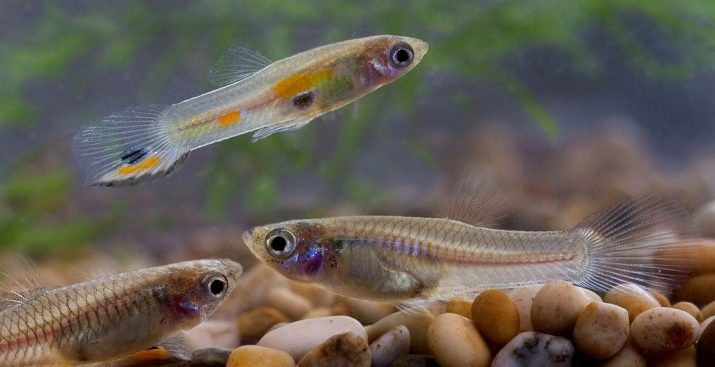
Growth features
At one time, the female gives birth to 15-60 fry, depending on the variety and age. The mother can eat part of the offspring during childbirth. When babies are born, they look colorless or completely transparent, the youngest specimens are 2-4 mm long. Then the cubs begin to grow rapidly, and their growth rate is largely determined by the volume of the aquarium and the quality of the water.
On average, in the first week of life, the length of the fry can reach 5-7 mm, in the next week it can grow up to 20 mm.
An adult female usually has a length of 40-60 mm, a male - 20-40 mm. Guppies reach such parameters in 4-5 months with proper care. By this age, the fish are already becoming sexually mature.

How to determine gender?
As the pups develop, they should be sorted. Already at the age of 2-4 weeks, some fry are capable of producing offspring. Sorting by sex is needed to avoid early pregnancy of females. For settling, the aquarist should prepare a separate container by adding water from the aquarium where the guppies are grown.
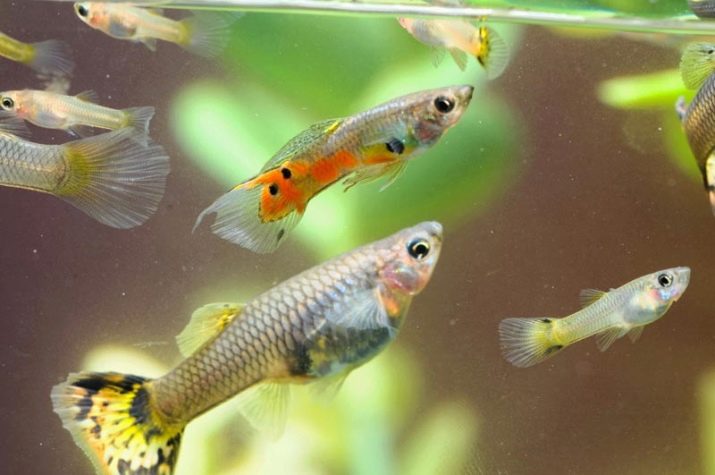
In order to plant males and females, it is important to learn to distinguish between them. In males, an elongated and coiled lower fin located near the anus can be observed. Gradually, it turns into gonopodium, and now it is even easier to determine the sex of juveniles. Also, after two weeks of age, sex differences are noticeable in complexion: males are slimmer than their sisters, over time they begin to take on bright colors. But females can be recognized by their plump abdomen and a dark spot near the anus.
Keeping boys and girls separate is good for their own health.
In addition, such maintenance is easier for the aquarist himself. Fish do not waste strength and health in pursuit of each other.
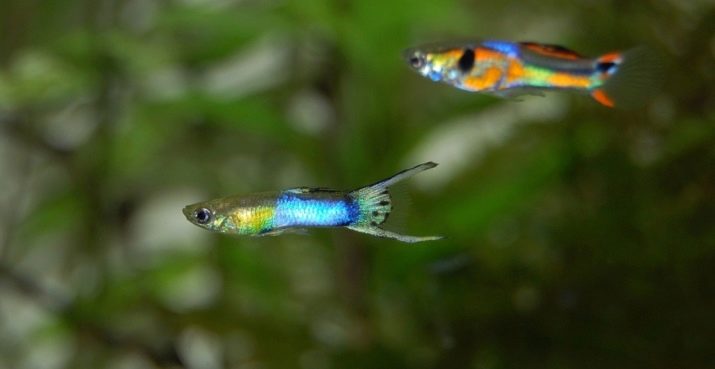
How to feed the fry?
Before you start feeding newborns, you need to know the approximate amount of a daily portion. So, in the first two weeks, guppy babies need to be fed with a portion of 150-170% of the weight of the fish. Further, up to one month of age, a food volume equal to 80-100% of the calf's weight is sufficient. From one to two months, the recommended portion is up to 30%, and from two months to puberty - up to 15%. After full maturation, the volume of the daily portion should be no more than 10% of the weight of the individual.
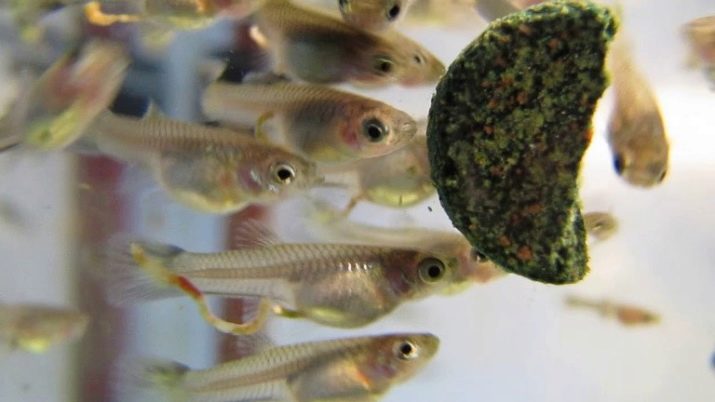
Natural feed
The fry can feed on anything, but they need to be fed with protein for proper development. As a rule, this important element is present in the composition of live food. In addition, live food is mobile, allows you to hunt for it, to develop the hunting instinct.
Live dust can serve as starter feed. - this is how the ciliate is called a shoe. Its size does not exceed 0.25 mm. Artemia nauplii up to 0.6 mm long can also serve as food in the first days of babies' life, however, it is important not to overdo it with this species - because of it, obesity can develop in newborns. An alternative to nauplii is a microworm 1.5x0.005 mm in size.
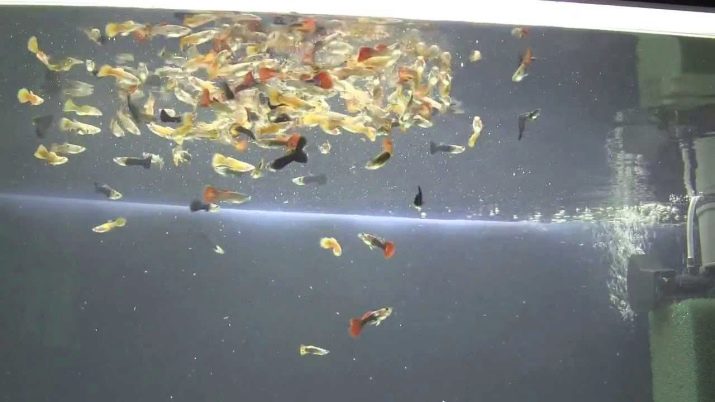
Phytoplankton, a harmful algae that can fill the entire aquarium, will also be an excellent live supplement.
To grow these microorganisms in an aquarium, place a jar of water in the sun... A couple of days is enough for phytoplankton to appear in the water. Then, through a syringe, inject the flowering water into the aquarium. Avoid natural food from natural reservoirs, as parasites and infections can enter the aquarium with food. You can disinfect the brought specimen with ozone, but this method will not get rid of toxins.
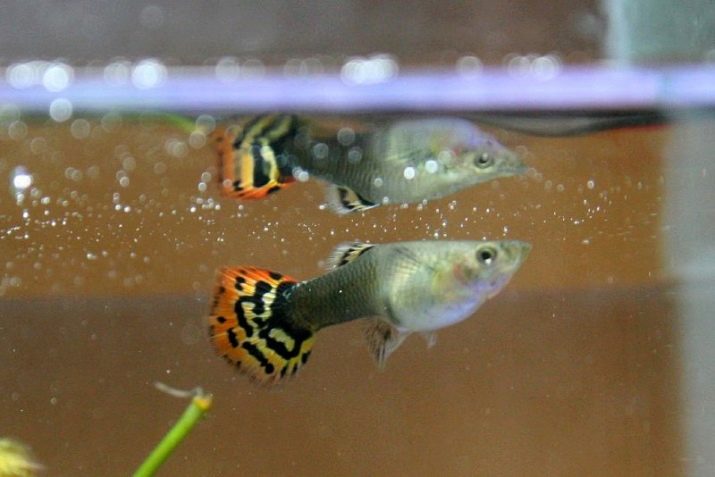
A common natural food option is considered daphnia, it is beneficial due to its protein, vitamins and minerals content. If the aquarist decides to feed the fry with mosquito larvae or worms, then they should first be chopped up. You can feed it with bloodworms, but only alive and of a deep red color. It is important to know in advance that when cut, bloodworms can spoil water. The coretra is less dangerous in this regard, but it contains very little protein, so this species is not suitable for constant feeding.
The tubifex is useful for the growth of young animals: it contains a large amount of nutrients, but is too high in calories, so it is important not to overfeed the fish with it and prevent them from becoming obese.
Before feeding the fry with the tubule, it is recommended to hold 100 g of the worm in 250 mg of multivitamins, then it will be further enriched with benefits. Feeding with frozen food is allowed.
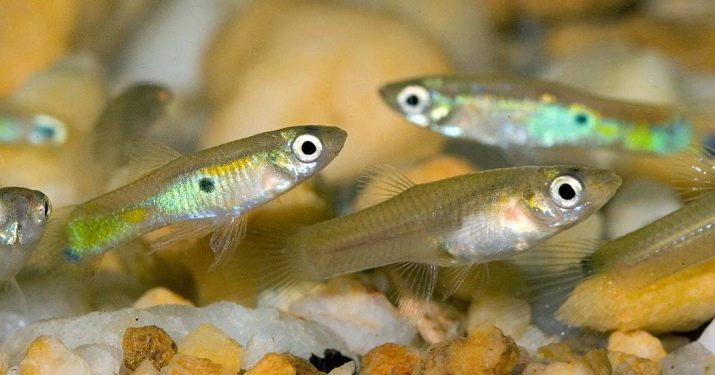
Commercial options
The most popular in hobbyist circles are feed brands Tetra, Sera, JBL. For feeding young guppies no longer than 10 mm, feed is allowed Tetra MicroMin, Sera Micron, JBL NovoTom, Tetra BioMin Paste.
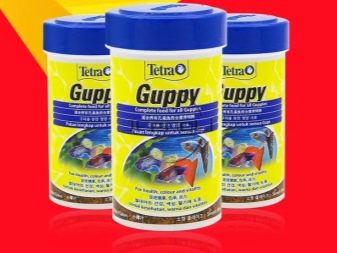

Live food substitutes
It is important to avoid complete substitution of live food., since this is still an inadequate food for the development of fry. Purchased dry food, dry daphnia can serve as a temporary alternative.
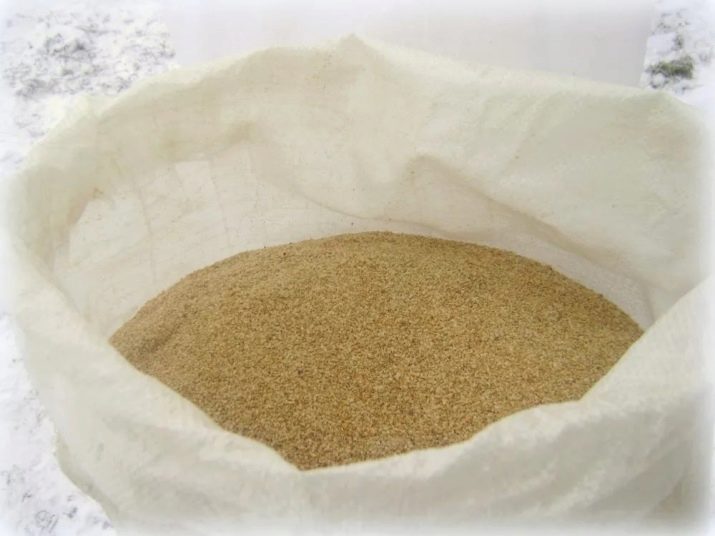
Aquarists also offer the following replacement options.
- Chicken yolk. Before this, the egg is boiled, the yolk is removed, crushed and mixed with aquarium water. The reservoir is squeezed out through cheesecloth.
- Milk powder... To prepare it, you need to evaporate the milk in a water bath.
- Cottage cheese... To obtain a suitable product, it is customary to heat the sour milk until a lump is formed. After that, the curd is washed and introduced into the aquarium through cheesecloth.
- Groats. Chopped oatmeal, corn, semolina will do.
- Vegetables and greens... Everything is pre-crushed.
All of these supplements can only be taken in addition to the main diet. Do not forget to siphon off the fragments that the fish have not eaten, otherwise they will spoil the water.
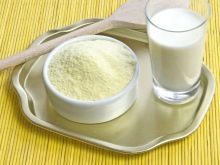
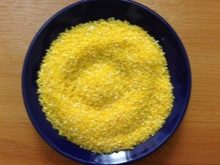

Favorable conditions
Taking care of newborn pets is not that difficult. As a rule, young animals are usually grown in a separate jig with a volume of 20-40 liters. If the aquarist did not have time to acquire additional capacity, then for the first time, it will also work. an ordinary three-liter jar with an aerator spray. To make care as easy as possible you can do without soil and decorations... The fry will feel comfortable if there are plants in the jig, but they are not necessary for keeping babies.

It is important to provide the tank with a filter and aeration system. However, remember to clean the filter regularly and select equipment that will not injure the fry.
Every day, a container for guppy offspring needs a 30% water change. Let it sit for about a day before pouring in fresh water. All parameters of new and old water must be the same. The first weeks, keep the temperature at 28 degrees, then gradually lower the reading to 26 degrees. When the fry are several months old, the optimum temperature for them is 24 degrees.
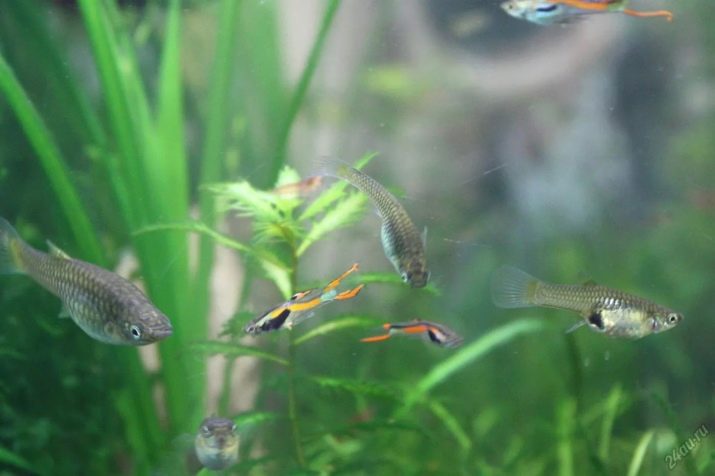
Can I transplant into a shared aquarium?
Keeping fry in a common aquarium is undesirable. They have a lot of enemies among neighbors, even their own parents will not refuse to feast on their offspring. If there is nowhere to put the babies away, then it is important to maximize the cubs' chances of survival. For this, adult fish need to be well fed so that they are not interested in guppy fry, place as many different shelters as possible on the bottom, where young fish will hide from adult relatives.
The most effective shelter will be a live plant; choose small-leaved long-stemmed specimens for planting. Most often, aquarists recommend using elodea, riccia, and kale.
By the way, you can feed the cubs right in the thicketsso that they do not have to swim out of their hiding place to the delight of their larger voracious relatives. If the fry are raised in a separate container, then there is no need to keep them there for too long. It will be possible to transplant pets into a common aquarium within three months after birth, but not earlier.
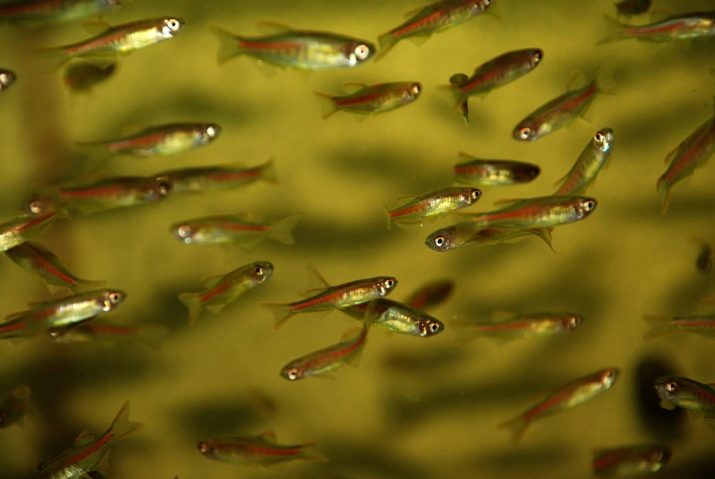
Possible problems
In general, guppies are fairly hardy fish, but babies with fragile immunity in conditions of illiterate maintenance may have problems.
Many aquarists observe a situation where fry begin to die for an unknown reason.
Most likely, death is provoked by illness. Infected plants and other aquarium inhabitants or poor quality food can become a source of disease. So, one of the most terrible ailments for guppy fry is tuberculosis or mycobacteriosis. Unfortunately, there is no cure for this disease yet, sick individuals have to be destroyed, and the entire infected container must be thoroughly disinfected.
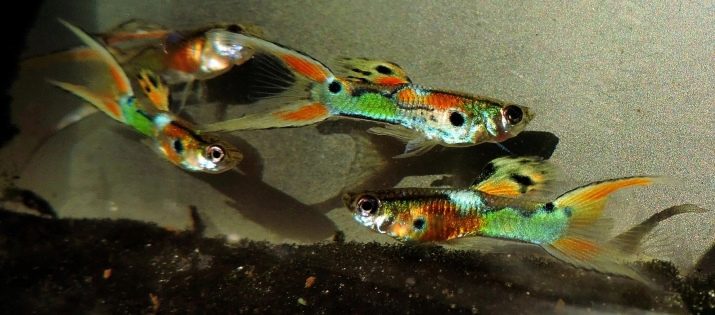
Diseases that can be cured include trichodiniosis. It develops when the parasitic ciliate Trichodina Modesta enters the aquarium. Newborn fry and slightly grown individuals most often become victims of this disease, and infection leads to their death. Usually, drugs such as methylene blue, "Trypaflavin", and table salt help to cope with the disease.
Poor water quality can also lead to death. For example, you can not keep baby guppies in an artificial reservoir, enriched with chlorine.The water must be settled. You can also use a dechlorinator available at pet stores to remove chlorine.
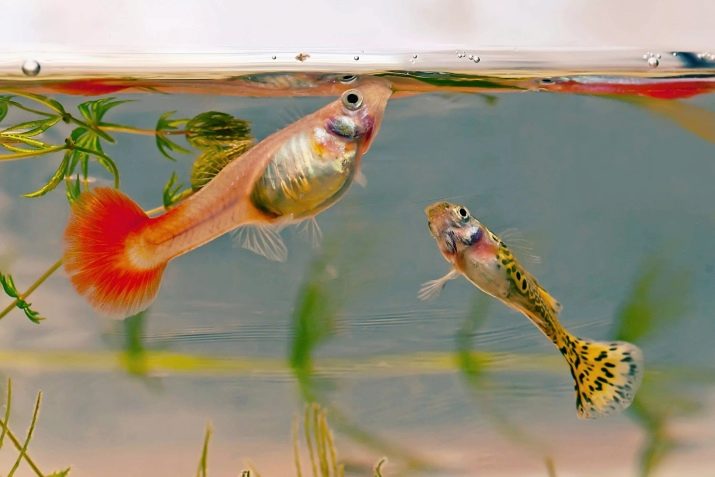
Sometimes breeders notice that the tails of the fry stick together. This is an uncommon occurrence, but it can also occur under inappropriate growing conditions. Noticing that the tail fins of the cubs have stuck together, it can be assumed that they are sick with bone disease or gyrodactylosis. In addition, osteosis can be recognized by the pale, protruding gills. It is possible to cure this disease at an early stage with malachite greens or potassium permanganate 10-15-minute baths.
Gyrodactylosis is caused by parasites and is treated according to the general principles of parasitic disease. So, the recommended drugs are formalin, malachite green, table salt.
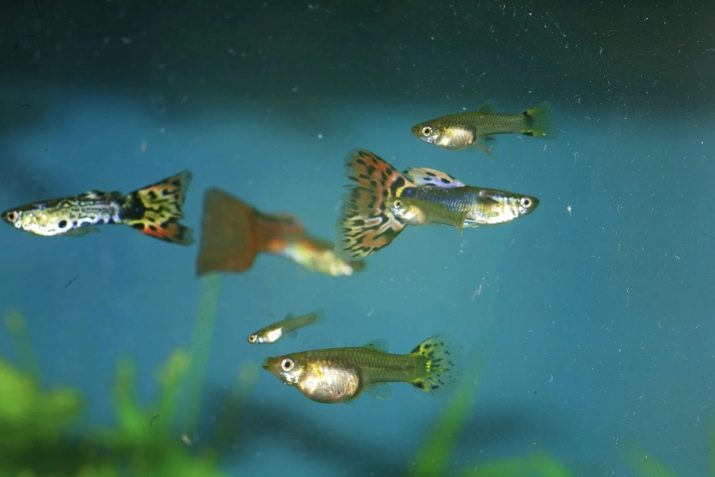
In order to avoid all these problems, do not add a new individual to the fry, if it has not passed the quarantine period, you cannot plant newly purchased plants without pretreating them. Buy only good quality food for feeding, thoroughly rinse all decorative items that you plan to put in the aquarium.
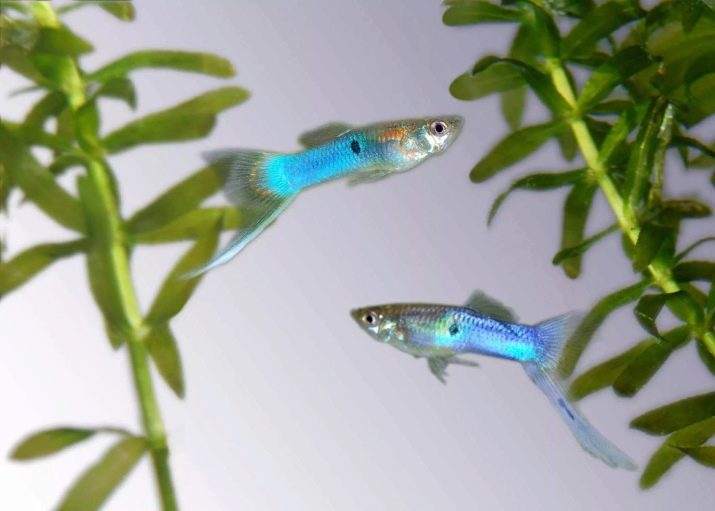
In the next video, you can watch the birth of guppy fry.









Thanks. I have 1 male, 1 female and one baby in my aquarium, and I was really upset that I have a boy. Thanks to you, I realized that I have a female.